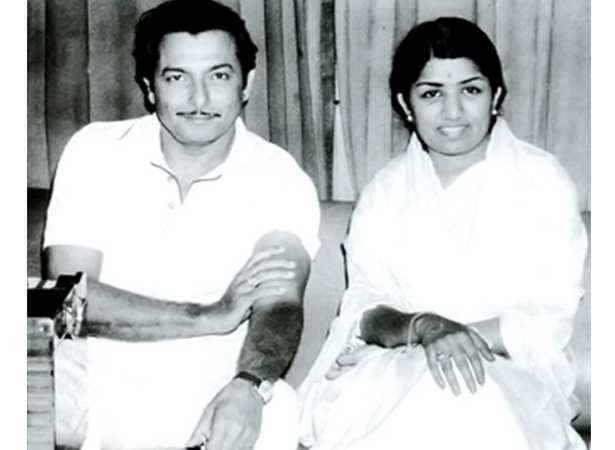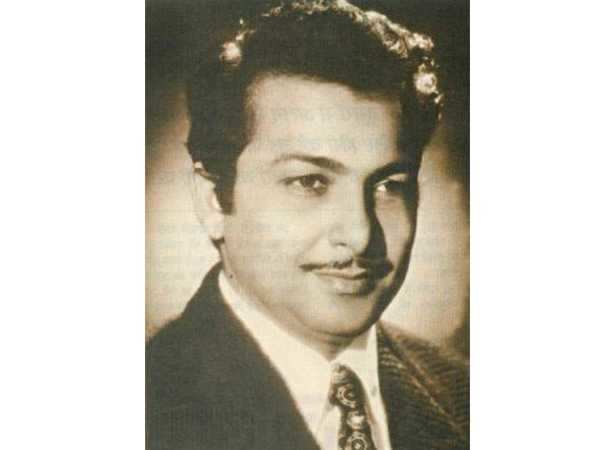Hamare baad is mehfil main afsane
bayan honge,
Baharen humko dhoondengi
Na jaane hum kahan honge...
Nothing sums up the bitter-sweet journey of music maestro Madan Mohan than these lyrics written by Majrooh Sultanpuri set to tune by the late composer for Baaghi (1953). They sum up his resentment for not getting his due, something which perhaps hastened his death. “The hurt was deep. He won appreciation but commercial success eluded him. Those days the barometer of success was that you had to compose music for big banners, with big stars, the film had to be a silver jubilee, and your song had to top the Binaca Geetmala. Above all, you had to win the Filmfare Award. And dad never had any of these,” laments Madan Mohan’s eldest son Sanjeev Kohli. “Aap ki nazron ne samjha (Anpadh) got stuck on No. 2 in the Binaca Geetmala. Yeh baat hamein chubhti thi, unhein bhi chubhti hogi,” says Sanjeev.
Sanjeev still can’t forget the day when his father hit the Times Of India headlines. But only after he was no more! “The pall bearers of his body were Rajesh Khanna, Dharmendra, Amitabh Bachchan and Rajendra Kumar. He had made to the front page because of the stars.” Uncannily, Madan Mohan’s popularity swelled after his demise. “After his death Mausam became a silver jubilee hit and Laila Majnu a golden. Koi patthar se na maaro became the chartbuster of Binaca Geetmala for 11 weeks. The recognition he’s posthumously makes me believe that it was destined to be after his death.”
Read on to know more in Sanjeev’s own words…
MUSICAL MEMORIES
My earliest memory of dad is of him waking us children (including Sanjeev’s younger brother Sameer and older sister Sangeeta) up early on Saturdays and taking us to shop for the choicest meats at Null Bazaar. Then we’d go to Crawford market for the vegetables. He’d then treat us to Badshah’s (famous cold drink house) falooda. Back home he’d combine the strangest of vegetables with mutton and whip up bhindi mutton, baingan mutton. He’d even invite his peers Kaifi Azmi saab, Chetanji (Anand) and of course Lataji (Mangeshkar) for a meal.
He was known as the Saab of the industry. He’d go to the races every Sunday in a suit and tie. For classical concerts he’d be dressed in kurta and pyjamas. He’d also take us for Dara Singh’s wrestling matches. There Daraji would say, ‘Mere se zyaada Madan Mohan ki muscles hai’. Dad was that fit. Every Sunday he’d take us for swim to the NSCI where he played billiards. And while swimming he’d go to the far end of the pool and start humming.
AWARD ANGST
Between the ’50s-’60s he was the youngest composer among veterans Naushad, SD Burman, Anil Biswas and Shankar Jaikishen. They had big banners with them – like SD Burman did Dev Annad’s films, Naushadsaab worked for Dilip Kumar and Shankar-Jaikishen for Raj Kapoor. He got to work with the lesser banners and smaller stars. It became difficult for him to spend on musicians even if he had a great sense of orchestra. More so, even if his songs were popular the films were not.
But he won the Filmfare nomination for Anpadh (1962). Naushad saab was so happy with his ghazals (Aap ki nazron ne samjha and Hai isi mein pyar ki aabroo) from the film that he said, ‘Give me these ghazals and take all my compositions’. But dad didn’t win the award and was disappointed. One day he was driving us around in his huge Studebaker, painted it in two shades, turquoise and white. Even the traffic police knew his car. I must have been six then, my sister a little older. We were telling him ‘drive faster, drive faster’. Soon we heard police sirens behind us. Dad slowed down the car. The police officer came and said, ‘Madanji aapka gaana Aapki nazron... kamal ka gaana hai’. Dad looked at my mother (the late Sheila Dhingra) and said, ‘Yeh mera award hai’.
The next time he was nominated for Woh Kaun Thi? (1964). Again he didn’t win it. Lataji came home and said, ‘Bhaiya, mujhe afsos hai ki aapko award nahin mila’. Dad said, ‘Yeh kya kam hai ke Lata Mangeshkar ko afsos huwa’. In 1966 he was nominated for Mera Saaya. But a month before the award he got the information that his name was removed (Titli udi by Shankar-Jaikishen for Suraj won the best song of the year). Once we were driving around in the same car when he said, ‘Kuch gaao beta!’ I started singing Baharon phool barsao (Suraj). He thought I’d sing Jhumka gira re (Mera Saaya, 1966). He looked at me from the rear view of the car and said, ‘Tum bhi!’ He was hurt by the thought that if my children don’t hum my songs who will.
Because the Filmfare Award always evaded him, he didn’t show any excitement when he won the National Award for Dastak (1972), refusing to pick it up. But Sanjeev Kumar said, ‘If you don’t come we’ll (co-star Rehana Sultan and himself) also not go. The two men then wore identical suits and bows for the function.
WHY LATA WAS SPECIAL
Lataji is like our mother. Dad and she had a bhai-behen relationship. For dad she even sang for free. Ashaji (Bhosle) sang as many songs as her for dad. But there was something about his chemistry with Lataji. Khayyam saab would tell dad, ‘I love you but I’m jealous of you. When Lata sings for you she sounds like someone else’. I’ve been on tours with Lataji. The minute she’d start a Madan Mohan song, there would be deafening applause. Even though the late OP Nayyar never made Lataji sing he said that the Lata-Madan combination was unparalleled.
PASSIONATE ARTISTE
Dad was building a house in Lonavala because it was getting noisy at Peddar Road where we were living. He’d often go there to supervise. One day he met with a bad accident whilst returning. His car fell in the valley but he jumped out. Yet he went straight to the recording studio and not to the hospital. While recording Nainon mein badra chaye (Mera Saaya), the musicians kept making mistakes and Lataji was getting tired. He lost his temper, banged his hand on the glass in the control room and was bleeding. But he refused to be bandaged till the recording was complete. Within 15 minutes the song was recorded.
THE DEPRESSION
Towards the end of the ‘60s, the new brigade was taking over - RD Burman, Laxmikant-Pyarelal, Kalyandji- Anandji. Each music director was signing about 40 films. At times dad wouldn’t get studios for recording. This aggravated his bitterness and insecurity and he started drinking a lot. Being frustrated, he’d get into arguments. Often he’d sit in the music room alone. Though he was a jovial person, this sadness came out in his later compositions. He’d often ask, ‘Main kya nahin kar raha hoon?’ whenever his versatility was questioned. One night he went to Chetan saab’s (Anand) house for the music of Salim Anarkali. There he drank a lot and vomited blood. He was taken to the hospital. He died of cirrhosis of the liver.
VEER ZAARA
Dad recorded a lot of tunes on his spools. After he passed away, I came upon a bank of tunes. Then 30 years later, the biggest director of the country Yash Chopra took his music for Veer-Zaara (2004), the biggest stars Shah Rukh Khan and Preity Zinta featured in it. His song Tere liye became the biggest song of the year.
Did You Know?
His first influence was classical singer Jaddan Bai (actress Nargis’) mother, his neighbour in Marine Drive. He’d stand outside her window and listen to her sing
Begum Akhtar loved the thumri-based number Kadar jaane na (Bhai Bhai, 1956) and heard it for 22 minutes on the phone
The Adalat (1958) numbers like Unko yeh shikayat hai, Yun hasraton ke daag and Jaana tha humse door made him the ‘ghazal king’
He composed the famous patriotic numer Kal chale hum fida (Haqeeqat, 1964)
The violin in the song Main yeh soch kar (Haqeeqat) was played by Pyarelal (of Laxmikant Pyarelal)
In Lag ja gale (Woh Kaun Thi) the melody is Indian but the chords are western
He used the western violin in Tu jahan jahan chalega (Mera Saaya)
Mohammed Rafi cited Tumhare zulf ke saaye mein sham (Naunihal, 1967) as his best with Madan Mohan
He used whispers and street sounds in Tumse kahoon ek baat (Dastak)



